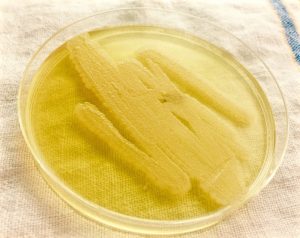While silver has always been effective against bacteria, scientists now believe they know why. A study from Boston University shows that when silver is in the form of dissolved ions, it makes the bacterial cell wall more permeable and disrupts the cell’s metabolism. This could help doctors fight antibiotic resistant bacteria.
 Silver also kills bacterial “persister cells”, which makes biofilms weaker. A Biofilm is a cluster of bacteria surrounded with polymers. Doctors estimate that up to 80% of human microbial infections are caused by bacteria growing together as a biofilm.
Silver also kills bacterial “persister cells”, which makes biofilms weaker. A Biofilm is a cluster of bacteria surrounded with polymers. Doctors estimate that up to 80% of human microbial infections are caused by bacteria growing together as a biofilm.
Antibiotics kill bacteria by making reactive oxygen compounds, which are toxic. When antibiotics are given in the presence of silver ions, more antibiotics can get into the bacterial cells, which help overcome resistance. Gram negative bacteria, such as E. coli, Salmonella, Shigella, and others, cause serious foodborne illness.
But silver is toxic to people too. If you ingest too much silver, you can develop argyria, a permanent condition that turns your skin a blue-gray color. Heart valves that were coated with silver to prevent bacterial infection caused a chronic inflammatory reaction; they were withdrawn from the market in 2000. Researchers hope that discovering the pathway silver uses to help antibiotics kill bacteria can help them develop more non-toxic pathways without the side effects.




